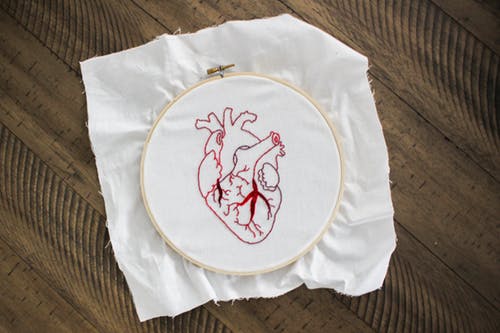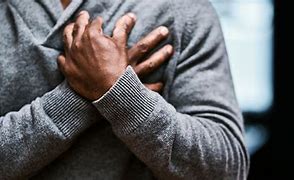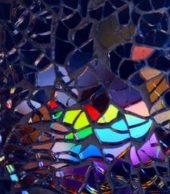Living Resurrection
A Reflection on Mark 16:1-8
When the sabbath was over, Mary Magdalene, and Mary the mother of James, and Salome bought spices, so that they might go and anoint him. 2 And very early on the first day of the week, when the sun had risen, they went to the tomb. 3 They had been saying to one another, “Who will roll away the stone for us from the entrance to the tomb?” 4 When they looked up, they saw that the stone, which was very large, had already been rolled back. 5 As they entered the tomb, they saw a young man, dressed in a white robe, sitting on the right side; and they were alarmed. 6 But he said to them, “Do not be alarmed; you are looking for Jesus of Nazareth, who was crucified. He has been raised; he is not here. Look, there is the place they laid him. 7 But go, tell his disciples and Peter that he is going ahead of you to Galilee; there you will see him, just as he told you.” 8 So they went out and fled from the tomb, for terror and amazement had seized them; and they said nothing to anyone, for they were afraid.
[Mark 16:1-8 (NRSV)]
_____________________________________________________________
Two years ago, my heart stopped beating. For several minutes, I was “dead” -- unconscious and receiving CPR. After receiving a shock defibrillation, I was alive again. Immediately following my heart attack, I experienced a resurrection of sorts. My resurrection was certainly not Jesus’ resurrection. But, I lived through the experience of being dead and then being alive again. Now, whenever I read a resurrection story, I am not only listening with my mind, I am also listening with the “ear of my heart” (my once-stopped, now-beating-again heart). Living through a heart attack has become a lens through which I read the Gospel stories of resurrection.
In Mark’s gospel, when the women go to the tomb and discover it is empty, they are “seized by terror and amazement,” so they do not tell anyone about what they have seen. (Mark 16:8). As Americans in the 21st Century, we might have a difficult time appreciating the degree of fear the women would have experienced as they encountered the resurrection. Mary Magdalene, Mary the mother of James, and Salome were companions of Jesus—the same Jesus who was just executed by the government. As they went to prepare his body for burial, the women must have carried fears about what might happen to them because of their association with Jesus. Then they arrive at the tomb, only to find that his body was gone. This, too, must have been terrifying.
Resurrection is not an Abstraction
When we hear this story from a comfortable chronological and physical distance, far from the physical reality of any empty tomb, it is difficult for us to experience the same distress the women must have experienced in the moment. To us, resurrection can feel like an abstraction. We have heard the Gospel told many times. Because we know the ending, the story lacks sufficient power to really shock us or scare us. Unlike the women at the tomb, we usually commemorate Easter with trumpets and lilies and new colorful dresses. Add an Easter Bunny, egg hunts, and baskets of candy, and the way we honor resurrection feels downright cheerful.
The women’s experience at the tomb was not cheerful; it is not a happily ever after story. The women were so paralyzed with fear that they could not find words to describe their experience. My bodily “resurrection” helps me understand the women’s silence. My heart attack changed me and is difficult to talk about. I am now alive, but I have experienced death and resurrection in my body, and I will never be the same. I hear the story in Mark’s Gospel and I can relate to the women’s difficulty speaking. Resurrection, even as I experienced it in the comfort of a hospital emergency room, was scary and difficult to articulate.
Coming Face to Face with Death Humbles You
In the wake of my heart attack, many people wanted to celebrate my “resurrection.” I have lost count of the number of people who offered me explanations for why they believe I didn’t die. I have no such explanations myself. It is humbling and baffling and mysterious; I am still short on words to describe what it’s like. Of course, I am grateful to be alive, but my celebration is muted. Coming face to face with death humbles you. I can’t help thinking about how close I was to not seeing my children grow up. I can’t help but wonder about people with similar health conditions who did not survive. Why did I survive and they did not? I have yet to find a satisfactory answer to that question. The joy of being alive, for me, is mixed with sorrow and distress and confusion.
When the topic of my heart attack comes up, I often find myself struck silent as other people offer their narratives about what my experience means. I do not always have words to describe the fear and bewilderment. Not everyone is able to understand what I mean. I feel lonely when I am not able to communicate about one of the most transformative events in my life. Defending my experience or arguing about what it means does not feel life-giving. When I get the impression someone does not understand, it’s just easier to remain silent.
Living Resurrection
Knowing that Mary Magdalene, Mary the mother of James and Salome struggled to describe their encounter at the empty tomb helps me feel less alone as I struggle to find words for my resurrection experience. The first ending of Mark’s Gospel (which ends with 16:8) reminds us that real life (even resurrected life) does not get tied up neatly with a bow. Death is real. It transforms us, sometimes beyond what words can explain. Resurrection brings new life, but new life is not simply a return to the way things were. Resurrection incorporates death, transforms it and reconstructs it into something new. Resurrection is miraculous, but a miracle is not the same thing as a happy ending. Happily ever after is for fairy tales--and I don’t want to live a fairy tale. I want to live resurrection, even if I cannot always put it into words.
 Learn more about core Benedictine values.
Learn more about core Benedictine values.






